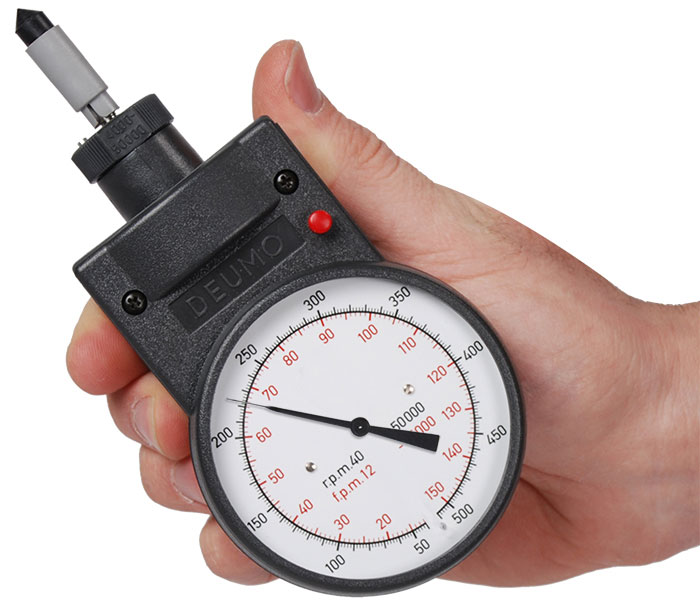How a Tachometer Aids Display Engine Wellness and Efficiency
How a Tachometer Aids Display Engine Wellness and Efficiency
Blog Article
Exploring the Functions and Advantages of a Tachometer: A Comprehensive Guide for Car Enthusiasts
In the realm of vehicle instrumentation, the tachometer stands as an important tool that uses drivers important insights into their car's performance. tachometer. From offering real-time information on engine rate to helping in maximizing equipment changes, the tachometer functions as greater than simply a dial on the dashboard. Its diverse functions not only enhance driving experience yet likewise play an essential function in preserving engine health and efficiency. As we explore the intricate operations and benefits of a tachometer, a deeper understanding of its importance for automobile lovers and specialists alike will unfold.
Recognizing the Basics of a Tachometer
In the realm of automobile instrumentation, understanding the essentials of a tachometer is necessary for any type of vehicle fanatic aiming to explore the intricacies of engine efficiency monitoring. A tachometer, usually presented on the dashboard of a vehicle, gauges the engine's revolutions per min (RPM) This important instrument offers real-time information on exactly how quickly the engine crankshaft is rotating. By keeping track of the RPM, vehicle drivers can ensure they are running within the optimal variety to optimize performance and effectiveness.
Tachometers usually have actually a scale marked in transformations per min, with a redline indicating the maximum rate at which the engine can safely operate (tachometer). This info is crucial for preventing engine damage and enhancing equipment shifting for manual transmissions. Furthermore, tachometers can aid in detecting engine issues such as misfires or a stopping working ignition system by spotting irregular RPM analyses
Relevance of Keeping An Eye On Engine Rate

Monitoring engine rate is an essential facet of automobile maintenance and efficiency optimization for automotive fanatics and specialists alike. The engine speed, gauged in changes per minute (RPM), indicates just how quick the engine's crankshaft is rotating. By maintaining a close eye on the RPM, chauffeurs can guarantee that the engine is running within the ideal array, preventing possible damage from over-revving or delaying. Keeping an eye on engine speed is specifically important throughout equipment shifts, as it aids drivers determine the correct time to change gears for smooth acceleration and reliable gas usage.
In addition, tracking engine rate can likewise supply useful insights into the overall health of the lorry. Uncommon variations in RPM may suggest problems such as a clogged air filter, fuel system issues, or even engine misfires. By discovering these abnormalities beforehand through the tachometer analyses, chauffeurs can address prospective problems without delay, protecting against extra severe damages and expensive repairs down the line. On the whole, keeping track of engine speed with a tachometer is a fundamental technique that can enhance driving efficiency, prolong engine life, and guarantee a safer and a lot more satisfying driving experience.
Enhancing Efficiency Via Equipment Shifts
Maximizing efficiency through calculated equipment changes is a crucial element of optimizing an automobile's effectiveness and power outcome. Correct gear shifting makes sure that the engine runs within its optimum power band, enabling smooth acceleration and improved gas economic situation. When changing gears, it is essential to take notice of the engine rate showed on the tachometer. By keeping an eye on the engine changes per min (RPM), vehicle drivers can establish one of the most opportune moments to upshift or downshift for optimal efficiency.

To achieve peak performance through gear changes, vehicle drivers must exercise smooth and prompt transitions between equipments, matching engine speed with roadway speed to harness the full possibility of their automobile's powertrain.
Maximizing Efficiency With a Tachometer
Grasping the art of gear moving in high-performance vehicles not just enhances driving experience however additionally plays a vital function in optimizing performance with a tachometer. tachometer. By paying close interest to the tachometer readings, drivers can maximize their equipment shifts to operate within the engine's most effective range. When accelerating, shifting equipments at the ideal RPM shown by the tachometer can avoid the engine from exhausting or underperforming, leading to improved gas performance and general performance
In addition, a tachometer helps drivers stay clear of unneeded revving, which not just squanders gas but also puts unnecessary strain on the engine. Constantly monitoring the tachometer while driving enables smoother gear transitions, reducing deterioration on the transmission system with time.

Advanced Tips for Tachometer Use
Enhancing driving precision via skilled tachometer analysis is vital to maximizing automobile efficiency. To look into sophisticated ideas my latest blog post for tachometer use, consider integrating making use of shift lights. Change lights are visual indicators that illuminate when it's time to move gears based upon engine changes per min (RPM), permitting for smooth gear adjustments without continuously keeping an eye on the tachometer. Furthermore, practicing heel-and-toe downshifting method can be beneficial when aiming for smoother changes between gears. This method includes using both the brake and accelerator pedals simultaneously while downshifting, aiding to preserve engine RPM and avoid jerky motions. Making use of a performance tachometer with customizable setups can give real-time data tailored to certain driving preferences or automobile alterations. By fine-tuning change factors and setting cautioning thresholds, motorists can enhance velocity and engine performance while decreasing the risk of over-revving. These innovative strategies, when paired with a deep understanding of tachometer analyses, can elevate driving proficiency and overall driving experience.
Conclusion
To conclude, the tachometer functions as an important device for cars and truck enthusiasts to monitor engine rate, improve performance through gear changes, and take full advantage of efficiency. By this article understanding the functions and advantages of a tachometer, drivers can enhance their driving experience and extend the lifespan of their lorry. Making use of advanced suggestions for tachometer use can better enhance driving abilities and general efficiency on the road.
Report this page